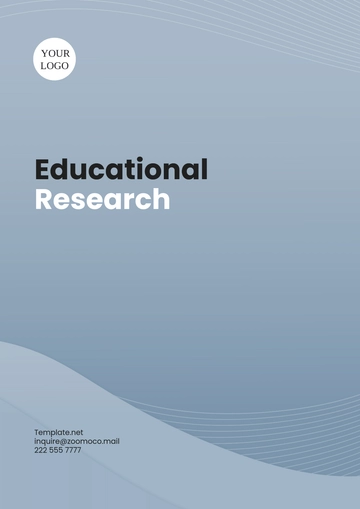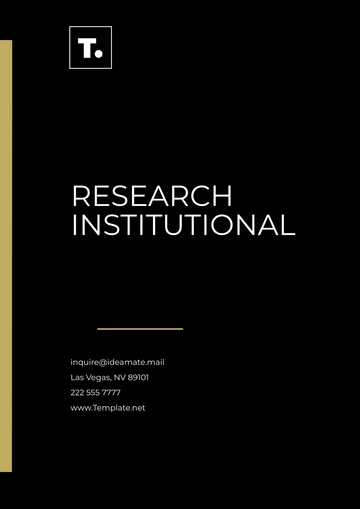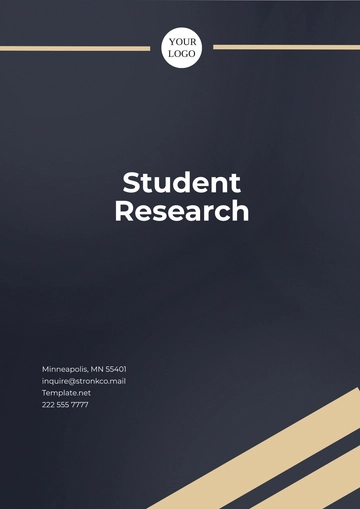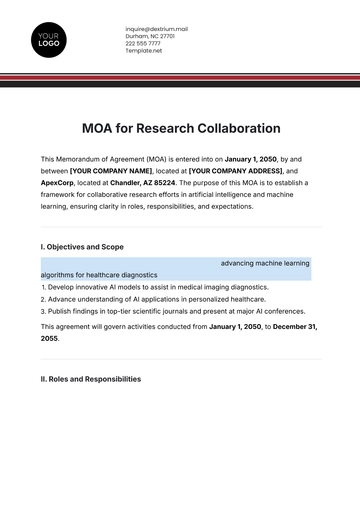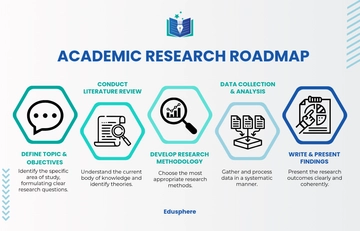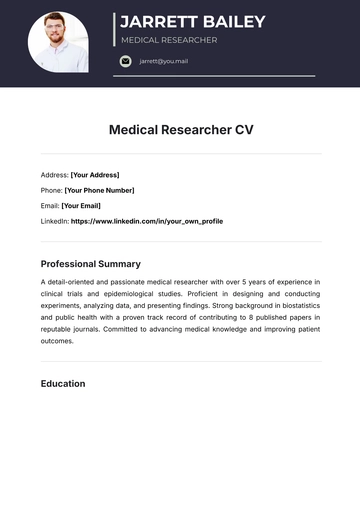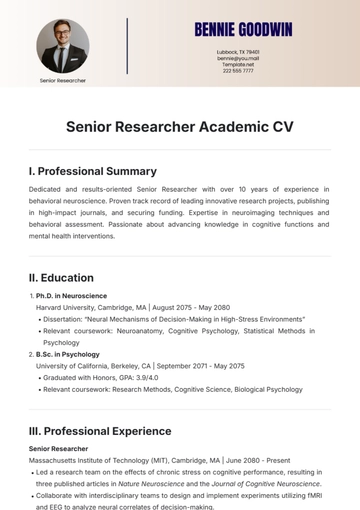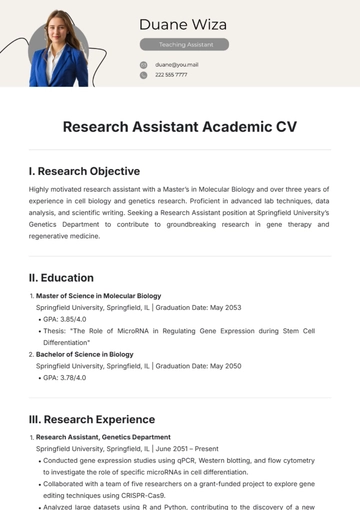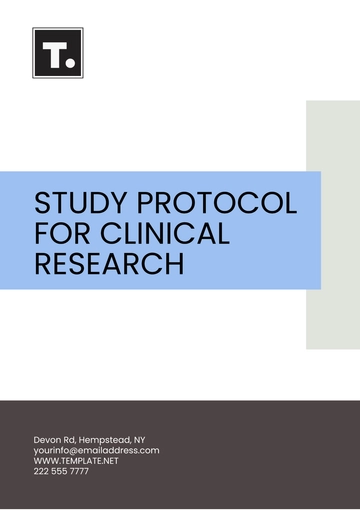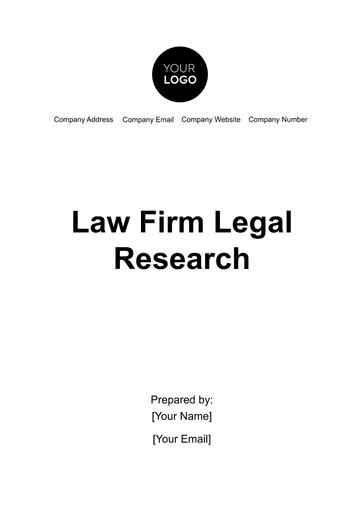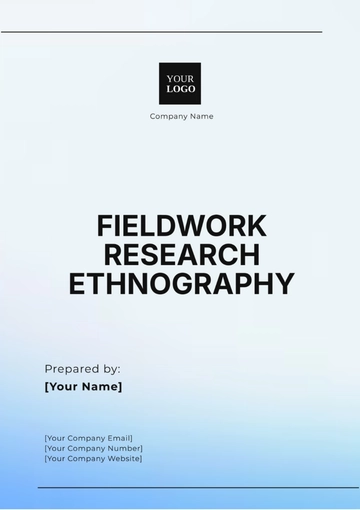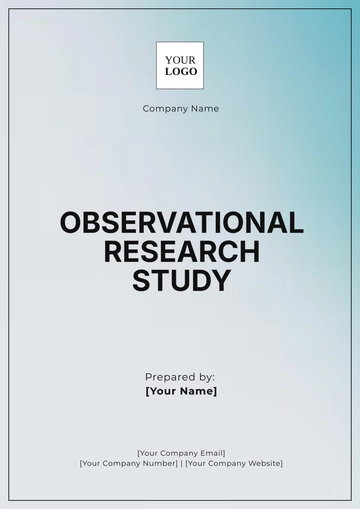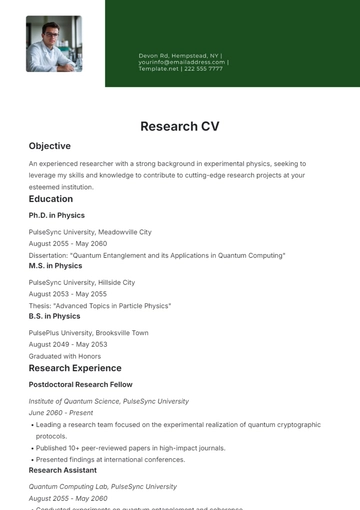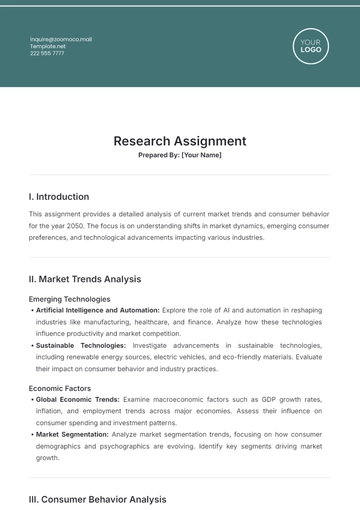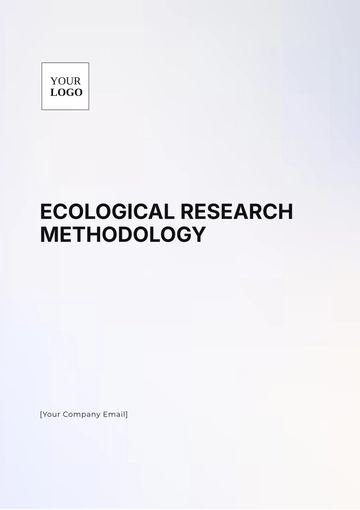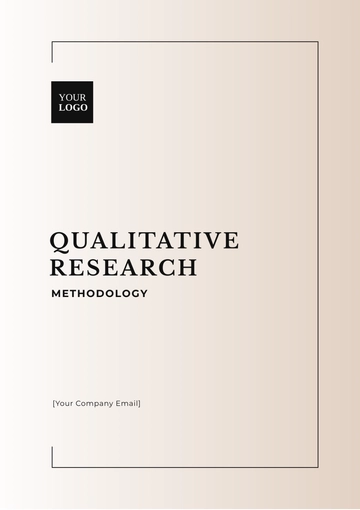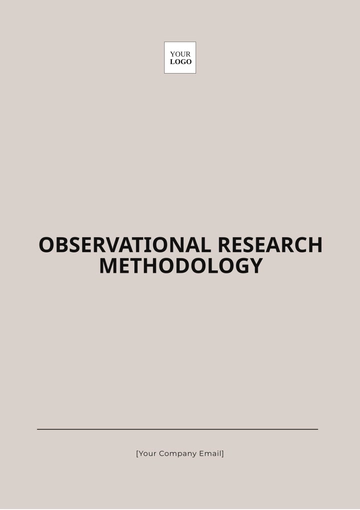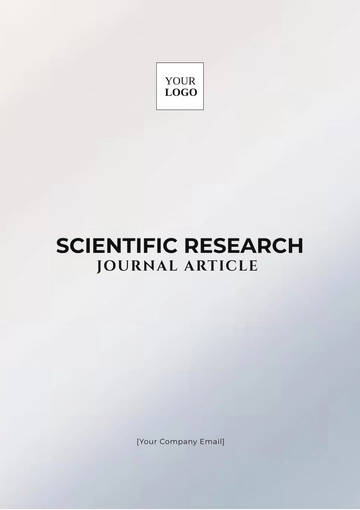Free Extensive Accounts Research
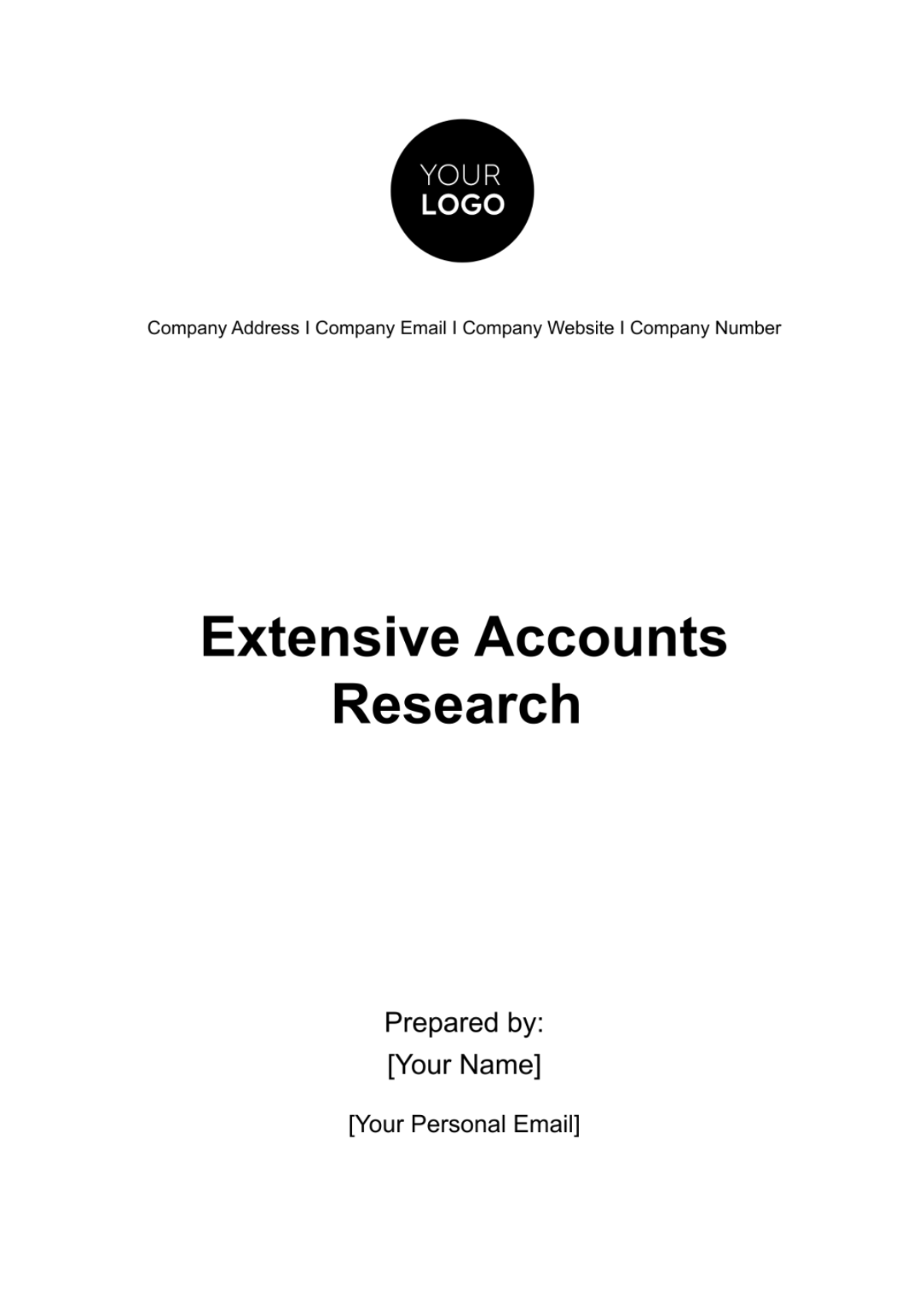
TABLE OF CONTENTS
Executive Summary...............................................................................................3
Revenue Streams...................................................................................................4
Expenditure Patterns.............................................................................................5
Asset Management................................................................................................6
Liabilities.................................................................................................................8
Conclusion..............................................................................................................10
Executive Summary
This research report presents a detailed and comprehensive analysis of the extensive accounts of [Your Company Name] for the fiscal year ending in [2050]. The report systematically examines various financial aspects of the company, including its financial position, diverse revenue streams, expenditure patterns, asset management strategies, and liability management.
Overview of Financial Performance
The year [2050] has been a pivotal period for [Your Company Name], marked by significant financial activities and strategic decisions. The company witnessed a substantial increase in its revenue streams, primarily driven by a surge in product sales and service income. Additionally, prudent investment strategies have yielded favorable returns, contributing to the overall financial growth of the company. This period also saw a controlled increase in expenditures, with a strategic allocation towards marketing and research and development, aimed at fostering long-term growth and innovation.
Asset and Liability Management
Effective management of assets and liabilities has been a cornerstone of the company's financial strategy. The asset portfolio, including physical assets, investments, intangible assets, and inventory, has been meticulously managed to optimize value and minimize depreciation. On the liabilities front, the company successfully reduced its long-term and short-term loan obligations while maintaining a balanced approach towards accounts payable and accrued expenses. This management reflects a robust and proactive approach to maintaining financial stability and ensuring sustainable growth.
The fiscal year [2050] was a year of strong financial performance for [Your Company Name]. The company not only enhanced its revenue streams but also demonstrated astute financial management in terms of expenditures, assets, and liabilities. This financial analysis provides valuable insights into the company's current standing and lays a solid foundation for future fiscal planning and decision-making.
Revenue Streams
The fiscal year has been a landmark year for [Your Company Name] in terms of revenue generation, marked by significant growth across various streams. This section provides an in-depth analysis of the diverse sources of income that have contributed to the company's financial success.
Product Sales
Product sales have been the primary revenue driver for the company in [2050]. The year witnessed a remarkable increase in sales figures, attributable to the successful launch of new product lines and the expansion of market reach. Innovative marketing strategies and enhancements in product quality led to increased customer acquisition and retention, significantly boosting sales revenue. The strategic diversification of the product portfolio also played a crucial role in appealing to a broader customer base and responding to dynamic market demands.
Service Income
Service income has shown impressive growth, underlining the company's commitment to providing high-quality services. This growth is a testament to the company's strategic focus on service diversification, customer satisfaction, and the implementation of advanced service delivery models. Investments in customer service and the introduction of new, value-added services tailored to meet specific client needs have been instrumental in this growth.
Investment Returns
Investment returns reflect the company's adept financial management and strategic investment decisions. The focus has been on maximizing returns from various investment channels, including stocks, bonds, real estate, and other financial instruments. The company's approach to balancing risk and reward in its investment portfolio has paid off, contributing significantly to the overall revenue stream.
Miscellaneous Income
Miscellaneous income, though a smaller component of the total revenue, has seen a steady increase. This includes earnings from secondary activities such as licensing, royalties, and ad hoc projects. This diversity in income sources demonstrates the company's ability to capitalize on various market opportunities and its agility in responding to non-core business ventures.
Revenue Streams in [2050]:
Quarter | Product Sales | Service Income | Investment Returns | Miscellaneous Income |
|---|---|---|---|---|
Q1 | $150,000,000 | $75,000,000 | $20,000,000 | $5,000,000 |
Sales revenue from [Q1 to Q4], indicating a successful year for [Your Company Name] in terms of product demand and sales performance. The growth attributed to various factors such as the introduction of new products, seasonal sales increases, or effective marketing strategies. This steady growth is a positive sign of the company's ability to attract and retain customers, as well as its adaptability to market trends and consumer needs. Service income showcases a progressive increase throughout the year. This increment suggests an expanding portfolio of services offered by [Your Company Name] and possibly an increase in the client base or pricing adjustments.
The increase in investment returns in [Q1] to [Q4] demonstrates [Your Company Name]'s effective investment strategies. This could be a result of well-timed market investments, diversification of investment portfolios, or favorable market conditions. Miscellaneous income, while smaller in comparison, shows a steady increase from [$5,000,000] in [Q1] to [$20,000,000] in [Q4]. The growth in this segment suggests [Your Company Name]'s ability to capitalize on various opportunities beyond its primary business operations, contributing to the overall financial health of the company.
The fiscal year [2050] has been exemplary for [Your Company Name] in terms of revenue generation. The company's strategic approach to expanding and diversifying its revenue streams has not only bolstered its financial position but has also positioned it well for sustained growth and resilience in the face of market fluctuations.
Expenditure Patterns
[Your Company Name] has strategically managed its expenditures to align with its long-term growth objectives and operational needs. This section delves into the various categories of expenses incurred by the company.
Operational Costs
Operational costs form a significant portion of [Your Company Name]'s expenditures. These costs include day-to-day expenses such as utilities, rent, maintenance, and salaries. The company focused on optimizing these costs through efficiency improvements and technological upgrades, leading to a more streamlined operation without compromising on productivity or quality.
Marketing
Investment in marketing has been a key expenditure for [Your Company Name], reflecting its commitment to brand building and market expansion. The year [2050] saw a significant allocation towards digital marketing, customer outreach programs, and promotional campaigns. These efforts were aimed at enhancing brand visibility, entering new markets, and strengthening the company's competitive position.
Research and Development (R&D)
R&D expenditure has been a priority for [Your Company Name], underscoring its focus on innovation and future growth. The company increased its investment in R&D to develop new products and services, improve existing offerings, and explore new technologies. This investment is a testament to the company's dedication to staying at the forefront of industry trends and maintaining a competitive edge.
Miscellaneous Expenses
Miscellaneous expenses include various ad hoc costs such as travel, legal fees, and event sponsorships. [Your Company Name] maintained a disciplined approach to managing these expenses, ensuring that all expenditures provided value and aligned with the company’s strategic objectives.
Expenditure Patterns in [2050]:
Quarter | Operational Costs | Marketing | R&D | Miscellaneous Expenses |
|---|---|---|---|---|
Q1 | $50,000,000 | $20,000,000 | $30,000,000 | $5,000,000 |
The operational costs indicate a steady increase in the day-to-day expenses of running the business. This could be due to expansion activities, inflationary pressures, or increased investment in operational efficiency. The incremental rise points to [Your Company Name]'s scaling operations or possibly strategic investments in improving operational capabilities. Marketing expenses show a consistent increase from [$20,000,000] in [Q1] to [$30,000,000] in [Q4]. This suggests that [Your Company Name] is progressively investing more in marketing efforts, possibly due to expanded marketing campaigns, entry into new markets, or enhanced digital marketing strategies
R&D expenses highlight [Your Company Name]'s commitment to innovation and product development. The increasing trend in R&D spending suggests ongoing investment in developing new products or services, improving existing offerings, and staying competitive in the market. Miscellaneous expenses could include a variety of non-recurring costs like travel, legal fees, or ad-hoc project expenses. The rising trend may indicate increased business activities that require additional ad-hoc spending, reflecting the dynamic nature of the company's operations.
[Your Company Name]'s expenditure patterns reflect a balanced approach between maintaining operational efficiency and investing in growth areas. The company has demonstrated prudent financial management, ensuring that expenditures are aligned with its strategic goals and contribute to long-term sustainability and profitability.
Asset Management
[Your Company Name] demonstrated astute asset management strategies, balancing the appreciation, utilization, and maintenance of its diverse assets. This section offers a detailed examination of how the company managed and leveraged its assets throughout the year.
Physical Assets
[Your Company Name]'s physical assets, including its office buildings, manufacturing facilities, and equipment, represent a significant portion of its asset portfolio. The company focused on optimizing the use of these assets, implementing maintenance programs to prolong their life and investing in new technologies to enhance efficiency. The company also explored green initiatives to reduce the environmental impact of its physical assets, thereby aligning with sustainability goals.
Investments
The company's investment portfolio in [2050] was carefully curated to balance risk and return. Investments were diversified across various sectors and asset classes, including stocks, bonds, and real estate. [Your Company Name] employed a dynamic investment strategy, adapting to market changes and leveraging opportunities for higher returns, while maintaining a focus on long-term financial stability.
Intangible Assets
Intangible assets, such as brand reputation, patents, and intellectual property, have been crucial to [Your Company Name]'s market position. The company invested in enhancing its brand value through marketing initiatives and protected its intellectual property through rigorous legal processes. Additionally, ongoing investment in research and development led to new patents, further strengthening the company's competitive advantage.
Inventory Management
Effective inventory management was a key focus for [Your Company Name] in [2050]. The company employed advanced inventory management systems to optimize stock levels, reduce holding costs, and improve supply chain efficiency. This approach ensured that the company could meet customer demand promptly without overburdening its financial resources with excessive inventory.
Asset Management in [2050]:
Asset Type | Beginning of Year Value | End of Year Value | Depreciation |
|---|---|---|---|
Physical Assets | $300,000,000 | $290,000,000 | $10,000,000 |
The slight decrease in the value of physical assets from [$300,000,000] to [$290,000,000] indicates that [Your Company Name] has been efficiently utilizing its physical assets while also accounting for the natural depreciation over time. This decrease could be due to normal wear and tear or the strategic disposal of outdated assets. Maintaining a high value of physical assets signifies the company's substantial investment in tangible resources that support its operations. The increase in the value of investments without any depreciation suggests successful investment strategies. This significant growth implies that [Your Company Name] has made profitable investments, possibly in the stock market, real estate, or other financial instruments.
The growth in intangible assets with a minimal depreciation of [$5,000,000], reflects [Your Company Name]'s ability to maintain and slightly enhance the value of assets like patents, trademarks, and brand reputation. This suggests effective management of intellectual property and a strong market position that the company continues to develop. The decrease in inventory value may indicate efficient inventory management, possibly through improved sales, better inventory turnover, or strategic reduction of stock levels. This management approach helps in reducing holding costs and aligning inventory with market demand.
[Your Company Name]'s asset management in [2050] was characterized by a strategic and proactive approach. The company successfully managed its physical and intangible assets, maintained a robust investment portfolio, and optimized inventory management. These efforts not only safeguarded the company's asset value but also contributed to its overall financial health and competitive position in the market.
Liabilities
[Your Company Name] demonstrated prudent and strategic management of its liabilities, ensuring a balanced financial position and maintaining long-term fiscal health. This section explores the different types of liabilities managed by the company and the strategies employed in this regard.
Long-term Loans
[Your Company Name]'s approach to managing long-term loans was focused on ensuring optimal terms and conditions, including interest rates and repayment schedules. The company strategically refinanced certain loans to take advantage of lower interest rates and extended the maturity of others to better align with its cash flow projections. This approach not only reduced the financial burden but also improved the company's credit standing.
Short-term Loans
Management of short-term loans was crucial for [Your Company Name]'s liquidity and operational funding. The company efficiently managed these loans to ensure they supported day-to-day operations without leading to excessive interest costs. Regular monitoring and judicious use of credit facilities helped maintain a healthy cash flow, enabling the company to meet its short-term financial obligations effectively.
Accounts Payable
Accounts payable management was a key focus area for [Your Company Name] in [2050]. The company maintained strong relationships with suppliers by ensuring timely payments, negotiating favorable payment terms, and leveraging volume discounts. This strategic approach not only fostered goodwill with suppliers but also optimized cash management and working capital.
Accrued Expenses
Accrued expenses, such as wages, taxes, and utilities, were managed with a high degree of accuracy and efficiency. [Your Company Name] implemented robust accounting systems to accurately track and forecast accrued expenses, ensuring that they were recognized and settled in a timely manner. This proactive management helped the company in maintaining a clear picture of its financial obligations and avoiding any unexpected financial strain.
Liabilities in [2050]:
Liability Type | Beginning of Year Amount | End of Year Amount | Change |
|---|---|---|---|
Long-term Loans | $200,000,000 | $190,000,000 | -$10,000,000 |
The decrease in long-term loans with a change of [$10,000,000], indicates that [Your Company Name] has been actively paying down its long-term debt. This reduction in long-term liabilities can be seen as a positive sign of the company's financial stability and its ability to manage and reduce its long-term financial obligations. A similar reduction in short-term loans suggests effective management of short-term financial liabilities. This might reflect [Your Company Name]'s strategy to reduce short-term debt, possibly to improve liquidity or to take advantage of favorable interest rates.
The increase in accounts payable could indicate a strategic decision by [Your Company Name] to extend payment terms with suppliers or an increase in purchases. While this increases current liabilities, it may also be a sign of leveraging credit terms for better cash flow management. The rise in accrued expenses reflects the company's increased obligations that have been incurred but not yet paid. This could include expenses such as wages, taxes, or utilities, indicating active business operations and possibly a strategic timing of payments to manage cash flows more effectively.
The management of liabilities by [Your Company Name] was marked by strategic planning and careful execution. The company successfully balanced its short-term and long-term obligations, maintained a healthy cash flow, and ensured a strong credit position. This effective management of liabilities played a crucial role in the company's financial stability and ability to invest in growth opportunities
Conclusion
The financial year [2050] has been a productive one for [Your Company Name], showcasing strong revenue growth, particularly in product sales and service income. While operational and R&D expenses have increased proportionally, the company has maintained a healthy balance in managing its assets and liabilities. The overall financial health of the company is robust, indicating a promising outlook for future fiscal periods.
- 100% Customizable, free editor
- Access 1 Million+ Templates, photo’s & graphics
- Download or share as a template
- Click and replace photos, graphics, text, backgrounds
- Resize, crop, AI write & more
- Access advanced editor
Expertly crafted by Template.net, discover our Extensive Accounts Research Template—a fully editable and customizable solution for your business needs. Modify content conveniently in our Ai Editor Tool, tailor fitting your specific requirements. Get on track with ease and professionalism as you handle your accounts research. Optimize your business operations with our user-friendly template today.



